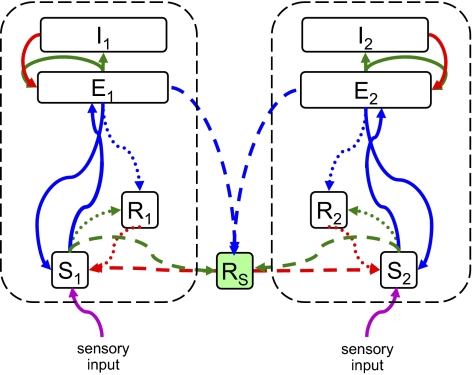Fig. 1.
A model of two thalamocortical modules coupled via a shared reticular nucleus. Each thalamocortical module (enclosed by a black dashed oblong) is modeled by a four-population Robinson (11, 12) system, in which the cortex is modeled by excitatory (E) and inhibitory (I) populations, and the thalamus is modeled by relay (S) and reticular (R) populations. The green and red arrows indicate local excitatory and inhibitory connections, which are assumed to have no delay. The blue arrows indicate long-range excitatory connections, characterized by a uniform propagation delay. The purple arrow indicates sensory input. The dashed arrows represent connections involving the shared thalamic reticular nucleus Rs, whose relative strength is determined by  . The dotted arrows represent connections involving the unshared thalamic reticular nuclei R1 and R2, whose relative strength is determined by
. The dotted arrows represent connections involving the unshared thalamic reticular nuclei R1 and R2, whose relative strength is determined by  .
.

